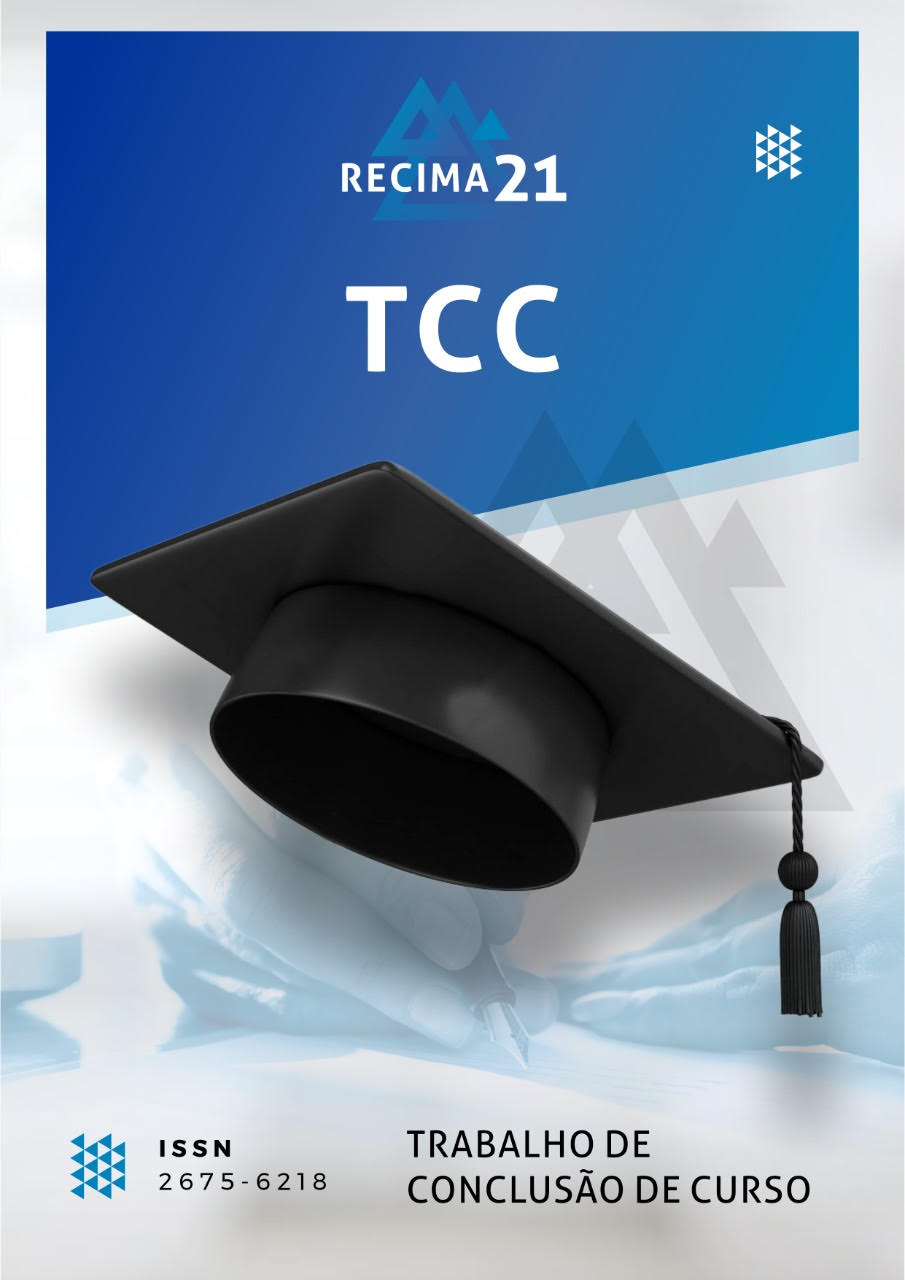APLICACIÓN DE ANTIDEPRESIVOS TRICÍCLICOS EN LA MIGRAÑA: UNA REVISIÓN DE LA LITERATURA
DOI:
https://doi.org/10.47820/recima21.v3i1.1568Palabras clave:
La migraña, o migraña, se caracterizaResumen
INTRODUCCIÓN: La migraña, o migraña, se caracteriza por un intenso dolor de cabeza pulsátil de origen vasomotor (CHARLES, 2018). Es uno de los tipos de cefalea primaria, de causas multifactoriales, que puede convertirse en una condición crónica, que influirá significativamente en la calidad de vida de aproximadamente el 15% de la población mundial (CALUMBY, 2015). OBJETIVO: El objetivo principal del presente estudio fue analizar artículos de investigación y revisiones de literatura enfocados en los efectos de los antidepresivos tricíclicos en la migraña. METODOLOGÍA: La bibliografía que se utilizará en esta producción científica se basa en artículos de investigación y revisión sistemática de la literatura, que se buscará utilizando bases de datos electrónicas, a saber, Lilacs, PubMed, Scielo y Medline. CONSIDERACIONES FINALES: se concluye que los antidepresivos tricíclicos son más efectivos en la prevención de la migraña que los inhibidores selectivos de la recaptación de serotonina, aunque con mayores efectos adversos, además de aumentar su efectividad con el tiempo.
Descargas
Citas
AZIMOVA J, SKOROBOGATYKH K, SERGEEV A, et al. Migraine and depression: a comparative assessment of the efficacy and safety of antidepressants in patients with migraine. J Neurol Stroke. 2018; 8(4) : 208‒212. DOI: 10.15406/jnsk.2018.08.00311;
BECKER, W. J. (2017). The Diagnosis and Management of Chronic Migraine in Primary Care. Headache: The Journal of Head and Face Pain, 57(9), 1471–1481. doi:10.1111/head.13089;
BERTOLUCCI, P. H. F. Neurologia: diagnóstico e tratamento. 2ª Ed. Barueri, SP: Manole, 2016
BROOME ME. Integrative literature reviews for the development of concepts. In: RODGERS, B.L.; KNAFL, K.A., editors. Concept development in nursing: foundations, techniques and applications. Philadelphia: W.B Saunders Company; 2020. p.231-50.
BURCH, R. Antidepressants for Preventive Treatment of Migraine. Curr Treat Options Neurol 21, 18 (2019). https://doi.org/10.1007/s11940-019-0557-2;
CHARLES, A. (2018). The pathophysiology of migraine: implications for clinical management. The Lancet Neurology, 17(2), 174–182. doi:10.1016/s1474-4422(17)30435-0;
DHARMSHAKTU, P., TAYAL, V., & KALRA, B. S. Efficacy of Antidepressants as Analgesics: A Review. The Journal of Clinical Pharmacology, 52(1), 6–17, 2012;
FIGUEIREDO, R.; PAIVA, C.; COSTA, E.; BITTENCOURT, M. Enxaqueca. Fundação Oswaldo Cruz. Canal Saúde Fiocruz, 2015;
HA, H. et al. Migraine Headache Prophylaxis. American Family Physician. Volume 99, Number 1 January 1, 2019;
INTERNATIONAL ASSOCIATION FOR THE STUDY OF PAIN. Epidemiology of Headache. Global Year Against Headache. Oct 2011 - Oct 2012;
KATSARAVA, Z. et al. Defining the Differences Between Episodic Migraine and Chronic Migraine. Curr Pain Headache Rep (2012) 16:86–92. DOI 10.1007/s11916-011-0233-z;
KATZUNG, B. G. Farmacologia básica e clínica. 12ª edição. Porto Alegre: AMGH, 2014;
KOWACS, F.; MACEDO, D. D. P.; NÉTO, R. P. S. Classificação Internacional das Cefaleias 3ª Edição. Comitê de Classificação das Cefaleias da Sociedade Internacional de Cefaleia. São Paulo, 2019;
KRYMCHANTOWSKI, A. V., & JEVOUX, C. DA C. The Pharmacological Treatment of Migraine in Brazil. Headache: The Journal of Head and Face Pain, 55, 51–58, 2015;
MARQUES, C. M. P. Enxaqueca: da teoria à prática. FFUC – Teses de Mestrado. Coimbra, Jul – 2016.
MAY, A., & SCHULTE, L. H. (2016). Chronic migraine: risk factors, mechanisms and treatment. Nature Reviews Neurology, 12(8), 455–464. doi:10.1038/nrneurol.2016.93;
MEDAWAR, C. V.; MATHEUS, M. E. Antidepressivos Tricíclicos e Gabapentinoides: uma análise do perfil farmacológico no tratamento da dor neuropática. Rev. Bras. Farm. 93(3): 290-297, 2012;
MORACZEWSKI J, AEDMA KK. Tricyclic Antidepressants. [Updated 2020 Dec 7]. In: StatPearls [Internet]. Treasure Island (FL): StatPearls Publishing; 2021 Jan-. Available from: https://www.ncbi.nlm.nih.gov/books/NBK557791/;
MORAIS MSBBF, BENSEÑOR IM. Cefaléias primárias. Rev Bras Med 2019;66(6):138-47.
PIETROBON, D., & MOSKOWITZ, M. A. (2013). Pathophysiology of Migraine. Annual Review of Physiology, 75(1), 365–391. doi:10.1146/annurev-physiol-030212-183717.
PORTO, C. C. Semiologia médica. 7ª Ed. Rio de Janeiro: Guanabara Koogan, 2014;
SCHWEDT, T. J. Chronic migraine. BMJ, 348 (mar24 5), g1416–g1416. 2014;
SILBERSTEIN, S. D. Preventive Migraine Treatment. CONTINUUM: Lifelong Learning in Neurology, 21, 973–989, 2015;
STAHL, S. M. Psicofarmacologia: bases neurocientíficas e aplicações práticas. 4ª edição. Rio de Janeiro: Guanabara Koogan, 2014;
STEINER, T. J., STOVNER, L. J., & BIRBECK, G. L. Migraine: The Seventh Disabler. Headache: The Journal of Head and Face Pain, 53(2), 227–229. 2013;
TORTA, R., & IERACI, V. Migraine and depression comorbidity: antidepressant options. Neurological Sciences, 33(S1), 117–118, 2012.
Descargas
Publicado
Cómo citar
Número
Sección
Categorías
Licencia
Derechos de autor 2022 RECIMA21 - Revista Científica Multidisciplinar - ISSN 2675-6218

Esta obra está bajo una licencia internacional Creative Commons Atribución 4.0.
Os direitos autorais dos artigos/resenhas/TCCs publicados pertecem à revista RECIMA21, e seguem o padrão Creative Commons (CC BY 4.0), permitindo a cópia ou reprodução, desde que cite a fonte e respeite os direitos dos autores e contenham menção aos mesmos nos créditos. Toda e qualquer obra publicada na revista, seu conteúdo é de responsabilidade dos autores, cabendo a RECIMA21 apenas ser o veículo de divulgação, seguindo os padrões nacionais e internacionais de publicação.













